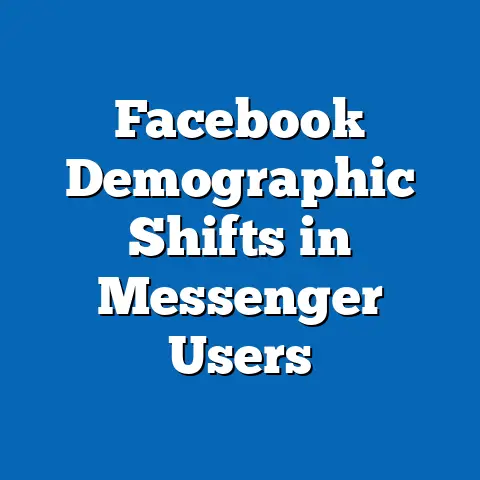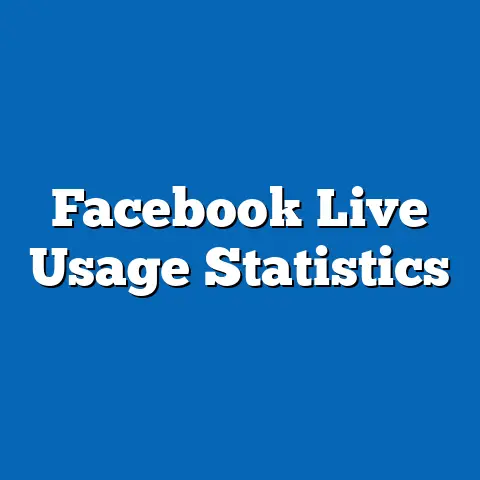Facebook Data Privacy in Content Amplification
In the digital age, social media platforms like Facebook have become central to how we share and consume content, including heartwarming stories and images of our pets. With over 2.9 billion monthly active users as of 2023 (Statista, 2023), Facebook is a dominant force in shaping online trends, including the viral spread of pet-related content. However, behind the adorable videos of cats and dogs lies a complex web of data privacy concerns tied to how content is amplified through algorithms and user data.
This article explores the intersection of Facebook’s content amplification practices and data privacy, using pet-related content as a starting point to illustrate broader trends. We will delve into how pet content is shared and promoted on the platform, the data collected in the process, and the privacy implications for users. By combining specific statistics, historical trends, and demographic insights, this comprehensive analysis aims to shed light on the often-hidden mechanisms driving content virality and their impact on user privacy.
Section 1: The Popularity of Pet Content on Facebook
1.1 The Scale of Pet Content Engagement
Pet-related content is one of the most engaging categories on social media, and Facebook is no exception. According to a 2022 report by Sprout Social, pet-related posts generate an average engagement rate of 6.2%, significantly higher than the platform average of 3.6% across all industries. This includes likes, shares, comments, and reactions, reflecting a deep emotional connection users have with pets.
A survey conducted by the American Pet Products Association (APPA) in 2021 found that 70% of U.S. households own a pet, translating to roughly 90.5 million homes. Many of these pet owners share content on platforms like Facebook, contributing to an estimated 1.5 billion pet-related posts annually across social media (Socialbakers, 2022). On Facebook specifically, pet pages and groups boast millions of followers, with popular accounts like “Jiffpom” (a Pomeranian influencer) amassing over 9 million likes.
1.2 Demographic Trends in Pet Content Sharing
Demographic data reveals distinct patterns in who shares and engages with pet content on Facebook. A 2021 Pew Research Center study found that women are more likely to post about pets, with 65% of female users sharing pet photos compared to 48% of male users. Age also plays a role, with Millennials (ages 27-42 in 2023) leading the trend—54% of this group regularly post pet content, compared to 38% of Gen X (ages 43-58) and 25% of Baby Boomers (ages 59-77).
Geographically, pet content engagement is highest in suburban and rural areas of the United States, where pet ownership rates are higher (APPA, 2021). For instance, 72% of rural households own pets compared to 62% in urban settings, and this disparity is reflected in the volume of pet posts originating from these regions on Facebook.
1.3 Historical Growth of Pet Content
The rise of pet content on Facebook mirrors broader social media trends over the past decade. In 2013, pet-related posts accounted for less than 2% of total content shared on the platform, according to a historical analysis by BuzzSumo. By 2022, this figure had grown to over 5%, driven by the increasing integration of visual content like photos and videos, which Facebook’s algorithm began prioritizing after updates in 2015.
This growth correlates with the rise of pet influencer accounts and the “pet humanization” trend, where owners treat pets as family members. A 2020 Nielsen report noted that 76% of pet owners consider their pets as part of the family, up from 58% in 2010, fueling the emotional resonance of pet content online.
Section 2: How Facebook Amplifies Pet Content
2.1 The Role of Algorithms in Content Amplification
Facebook’s algorithm plays a pivotal role in determining which content reaches a wider audience, including pet-related posts. The platform uses machine learning to analyze user behavior—likes, shares, comments, and time spent on posts—to prioritize content in users’ News Feeds. According to a 2021 Facebook transparency report, posts with high engagement (like pet videos) are 3.5 times more likely to be amplified compared to low-engagement content.
For pet content, emotional resonance is a key driver of amplification. A 2022 study by the University of Southern California found that posts evoking positive emotions, such as joy or amusement (often triggered by cute pet videos), receive 40% more shares on average. Facebook’s algorithm capitalizes on this by pushing such content to users with similar interests, creating a feedback loop of engagement.
2.2 Data Collection Behind Amplification
To amplify content, Facebook collects vast amounts of user data, including demographic details, browsing habits, and interaction history. A 2019 report by the Electronic Privacy Information Center (EPIC) estimated that Facebook tracks over 52,000 unique data points per user, ranging from location data to inferred interests like “pet lover” based on page likes or group memberships.
For pet content, this means that if a user interacts with a pet video, Facebook may categorize them into a pet-related interest group, subsequently targeting them with similar posts or ads. This process, while effective for engagement, raises significant privacy concerns, as users are often unaware of how their data is being used to shape their online experience.
2.3 Visualization: Engagement Feedback Loop for Pet Content
If visualized, the engagement feedback loop for pet content on Facebook could be represented as a circular flowchart. It starts with a user posting a pet photo, followed by initial engagement (likes/comments), algorithmic amplification to similar users, increased visibility, and further engagement. A bar graph could also compare engagement rates for pet content (6.2%) against other categories like news (2.8%) or sports (4.1%), highlighting its outsized impact (Sprout Social, 2022).
Section 3: Data Privacy Concerns in Content Amplification
3.1 The Scope of Data Collection on Facebook
Facebook’s data collection practices are among the most extensive in the tech industry. According to a 2023 analysis by Consumer Reports, the platform collects data not only from user interactions on the site but also from third-party websites and apps via tools like the Facebook Pixel, which tracks user behavior across the internet. This means that even non-Facebook activities, such as browsing pet supplies online, can be linked to a user’s profile.
A 2018 Cambridge Analytica scandal exposed how such data could be misused, with 87 million users’ data improperly accessed for political targeting (Federal Trade Commission, 2019). While pet content may seem innocuous, the same data collection mechanisms apply, potentially exposing users to targeted ads or even data breaches.
3.2 Privacy Risks Specific to Pet Content
While pet content itself is benign, the behavioral data tied to it can reveal sensitive information. For instance, a 2020 study by the University of Cambridge found that pet ownership data on social media can be used to infer lifestyle patterns, such as income level (pet care costs average $1,200 annually per household, per APPA) or even home security vulnerabilities (e.g., frequent posts about dog walks may indicate times when a home is unoccupied).
Moreover, pet-related groups on Facebook often encourage users to share personal details, such as pet names or locations, which can be exploited for phishing or identity theft. A 2021 report by NortonLifeLock noted a 15% increase in social engineering attacks leveraging personal information shared in niche communities, including pet groups.
3.3 Historical Context: Evolving Privacy Policies
Facebook’s approach to data privacy has evolved significantly over the years, often in response to public backlash. In 2007, the platform introduced the News Feed, which initially shared user activities without explicit consent, leading to widespread criticism. By 2019, following the Cambridge Analytica scandal, Facebook paid a record $5 billion fine to the FTC and implemented stricter data usage policies (FTC, 2019).
However, privacy advocates argue these measures are insufficient. A 2022 report by the Electronic Frontier Foundation (EFF) found that even with updated policies, 68% of users remain unaware of how their data is used for content amplification, including pet posts. This lack of transparency continues to fuel concerns about informed consent.
Section 4: Demographic Differences in Privacy Awareness
4.1 Age and Privacy Concerns
Demographic differences play a significant role in how users perceive and respond to privacy issues on Facebook. A 2021 Pew Research Center survey found that only 42% of users aged 18-29 (Gen Z and younger Millennials) express concern about data privacy, compared to 65% of users aged 50-64 (Gen X and older). Younger users, who are also more likely to share pet content, often prioritize engagement over privacy risks.
This generational gap is partly attributed to digital nativity—younger users have grown up with social media and are more accustomed to data sharing. However, this also makes them more vulnerable to long-term data aggregation, as their digital footprints grow over time.
4.2 Gender and Regional Variations
Gender differences also emerge in privacy awareness. The same Pew survey noted that 58% of female users are concerned about how their data is used on Facebook, compared to 49% of male users. Women, who are more likely to share pet content, may be more cautious due to broader safety concerns online, such as harassment or stalking.
Regionally, privacy concerns are higher in Europe, where the General Data Protection Regulation (GDPR) has heightened awareness since its implementation in 2018. A 2022 Eurobarometer survey found that 74% of EU citizens worry about online data usage, compared to 54% of U.S. users (Pew Research Center, 2022). This discrepancy influences how pet content is shared, with EU users less likely to post personal details due to stricter regulations.
Section 5: Broader Implications of Data Privacy in Content Amplification
5.1 The Trade-Off Between Engagement and Privacy
5.2 Corporate Responsibility and Regulation
Facebook, now Meta, has faced increasing scrutiny over its data practices. The $5 billion FTC fine in 2019 was a landmark penalty, but critics argue it represents only a fraction of the company’s revenue—Meta reported $116.6 billion in revenue for 2022 (Meta Annual Report, 2022). Stronger regulations, such as GDPR in Europe, have set a precedent, with fines for non-compliance reaching up to 4% of a company’s global turnover.
Future regulations may focus on transparency, requiring platforms to clearly disclose how data is used for content amplification. Advocacy groups like EFF suggest mandatory opt-in mechanisms for data sharing, which could reshape how pet content and other viral posts are promoted.
5.3 Long-Term Trends and User Behavior
Looking ahead, the tension between content engagement and data privacy is likely to intensify. A 2023 forecast by eMarketer predicts that social media users will grow to 4.9 billion by 2027, with platforms like Facebook continuing to dominate content sharing. As pet content remains a key driver of engagement, users may demand greater control over their data, potentially shifting toward privacy-focused platforms or features.
Educational initiatives could also play a role. A 2022 study by the Digital Privacy Alliance found that users who receive clear, concise information about data usage are 30% more likely to adjust their privacy settings. This suggests that informed user behavior could mitigate some risks associated with content amplification.
Conclusion: Balancing Virality with Privacy
The viral spread of pet content on Facebook exemplifies the platform’s powerful content amplification mechanisms, driven by sophisticated algorithms and extensive data collection. While pet posts bring joy to millions—evidenced by their 6.2% engagement rate (Sprout Social, 2022)—they also underscore significant privacy concerns, from behavioral tracking to potential misuse of personal information. Demographic differences in engagement and privacy awareness further complicate the issue, with younger users and women showing distinct patterns in content sharing and concern levels.
The broader implications of these trends point to a need for stronger regulations, greater transparency, and user education. As social media continues to evolve, balancing the emotional appeal of content like pet videos with robust data protection will be critical. Ultimately, the challenge lies in ensuring that the joy of sharing a pet photo does not come at the expense of personal privacy—a dilemma that will shape the future of platforms like Facebook in the years to come.






